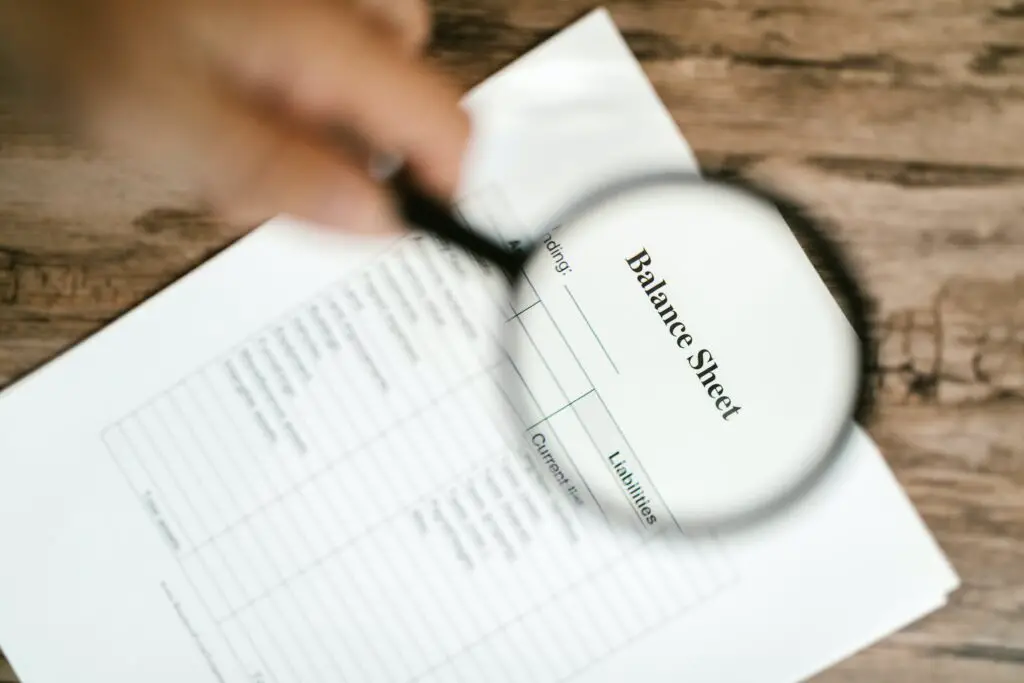Decoding the Art of Balance Sheets:
Unveiling the Financial Symphony
In the grand orchestration of a company’s financial narrative, the balance sheet stands as a symphony of numbers, revealing the intricate dance between assets, liabilities, and equity. Often seen as a cryptic manuscript, understanding this financial document is akin to deciphering the eloquent language of a financial maestro. In this exploration, we’ll unravel the layers of a balance sheet, demystifying its components and unveiling the hidden melodies that dictate a company’s financial health.

The Prelude:
Understanding Balance Sheets
A balance sheet, the scorecard of a company’s financial standing, portrays a snapshot of its financial health at a specific moment in time. At its core, it showcases the delicate equilibrium between what a company owns (assets) and what it owes (liabilities and equity). Assets represent the resources at a company’s disposal—tangible and intangible possessions, investments, and cash. On the flip side, liabilities encompass obligations owed to external entities, while equity delineates the portion of the company’s value attributable to its shareholders.
The Overture of Assets
Assets, the building blocks of a company’s financial fortress, manifest in various forms. Tangible assets encompass physical possessions like property, equipment, and inventory. Intangible assets, less tangible but equally valuable, comprise intellectual property, patents, trademarks, and goodwill. Current assets, those anticipated to be converted into cash within a year, include cash equivalents, accounts receivable, and inventory. Long-term assets, extending beyond a year, encompass investments, properties, and long-term receivables. A judicious blend of these assets not only fortifies a company’s financial position but also bolsters its ability to weather uncertainties.
The Harmonious Rhythm of Liabilities
Liabilities, akin to the counterbalance in a musical composition, represent the financial obligations a company owes to external entities. Current liabilities encompass short-term obligations due within a year, such as accounts payable, short-term debts, and accrued expenses. Long-term liabilities, extending beyond a year, include long-term debts, leases, and deferred tax liabilities. While liabilities signify obligations, they also denote avenues through which companies access necessary funding. The strategic management of liabilities ensures a delicate balance between leveraging opportunities and mitigating risks.
The Crescendo of Equity
Equity, the culmination of a company’s financial symphony, embodies the residual interest in assets after deducting liabilities. Common stock, preferred stock, retained earnings, and additional paid-in capital constitute the ensemble of equity. Common stock represents ownership shares issued to shareholders, while preferred stock offers specific privileges, often in dividend distributions. Retained earnings, the accumulation of profits or losses over time, reflect the company’s financial history. Equity serves as the bedrock of financial solvency, signifying the stakeholders’ stake in the company’s success and serving as a beacon of confidence for investors.
The Interplay:
Analyzing Ratios and Indicators
Beyond the surface, the balance sheet orchestrates a plethora of ratios and indicators that illuminate a company’s financial performance. Liquidity ratios like the current ratio and quick ratio assess a company’s ability to meet short-term obligations. Solvency ratios, including debt-to-equity and debt-to-assets ratios, gauge a company’s long-term financial viability and its ability to withstand financial stress. Efficiency ratios like inventory turnover and accounts receivable turnover shed light on operational efficacy. Analyzing these metrics unveils the financial symphony’s nuances, providing a comprehensive understanding of a company’s fiscal virtuosity.
The Epilogue:
Deciphering the Story Within
Each line, number, and entry in a balance sheet narrates a compelling story—a saga of a company’s triumphs, challenges, and aspirations. Beyond its numerical guise, the balance sheet serves as a testament to managerial prudence, financial stewardship, and strategic foresight. Deciphering this financial manuscript requires not just numerical acumen but a nuanced understanding of the company’s operations, industry trends, and economic landscapes. Embracing the narrative within the numbers empowers stakeholders to make informed decisions, charting a course toward sustainable financial success.
The Allegro of Financial Health
A healthy balance sheet reflects a harmonious alignment between assets, liabilities, and equity—a melody that resonates with stability and resilience. It signifies a judicious management of resources, an astute handling of financial obligations, and a commitment to fostering shareholder value. Companies with robust balance sheets stand as pillars of financial strength, capable of weathering storms, seizing opportunities, and charting a trajectory toward enduring success. Understanding the rhythm and nuances of a balance sheet enables stakeholders to gauge a company’s financial prowess, guiding them toward prudent investment decisions and strategic partnerships.
The Finale:
Continual Symphonic Evolution
Yet, as with any symphony, a balance sheet remains in a perpetual state of evolution. It adapts to market fluctuations, operational changes, and strategic maneuvers. Embracing this dynamic nature requires a continual quest for financial acumen, an astute monitoring of financial health, and an agile response to emerging challenges. The financial symphony composed within a balance sheet thus becomes not just a snapshot but an evolving narrative—a testament to a company’s resilience, adaptability, and enduring pursuit of financial excellence.
